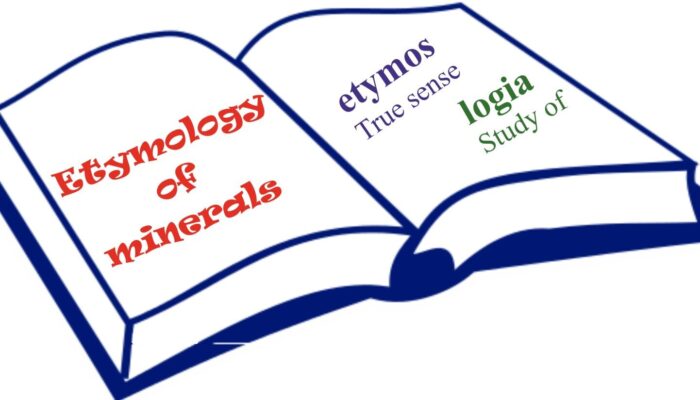
Hello everyone!!
In an earlier blog, my colleague Eliot Carter discussed the etymology of elements. As a PhD student in geochemistry, mineralogy, Petrology and Volcanology, we all regularly deal with a large number of minerals. Among them, some are very common and a few are hardly known. However, sometimes we forget the basics to deal with the complicated things. In fact, PhD students mostly face this problem. Hence, today’s blog will deal with the mystery behind the nomenclature of some common as well as a few rare rock-forming minerals. Before dealing with the physical, chemical, and optical properties of these minerals, we all should know the roots of their names.
“Etymology is the key which unlocks both knowledge and a love of language”
Do you know the origin of the term ‘mineral’?
The term mineral itself was derived in the late 14 century from the old French word ‘mineral’ meaning of which is ‘a substance obtained by mining’, and the Medieval Latin word ‘mineral’ indicating ‘something mined’.
Now have a look at the origin of a few common rock-forming minerals
Most of the minerals were named after the places from where they were reported for the first time or the name after the Scientists, who discovered or explored them. Many have been named after the most diagnostic property or resemblance to some other common or useful object. Let’s drill into deep to know the exact roots of some common minerals.
Minerals of Mohs hardness scale-
To express the relative hardness of a mineral by a numerical value, Austrian Mineralogist F. Moh proposed a list of ten minerals representing a hardness scale ranging from 1 to 10. This is well known as Mohs scale of hardness.
- Talc: The term ‘Talc’ was given by Georgius Agricola in 1564, which is believed to be derived from the Arabic word ‘Talq’ meaning mica, as it forms mica-like flames. As per a few other sources, ‘talq’ means pure. As the streak of this mineral is pure white it was designated as ‘Talc’.
- Gypsum: The name of this mineral is derived from the Greek word ‘gypsos’ meaning plaster. Actually, quarries in the Montmartre district of Paris used burnt gypsum for plaster. The ‘plaster of Paris’ found in markets is basically the dehydrated gypsum.
- Calcite: This term, coined by coined by Austrian mineralogist Wilhelm Karl von Hardinger, has derived from the German word ‘Calcit’ which actually came from the Latin word ‘calx’ meaning lime.
- Fluorite: The Latin word ‘fluere’ means to flow. As fluorite is used as a flux in steel and aluminium processing, this halide mineral is named so by Carlo Antonio Galeani Napione. The term fluorescence is also derived from the name of this mineral, which often exhibits this property. The element fluorine was also named after this mineral, which is one of the major sources of this element.
- Apatite: Apatite is the name given to the phosphate group of minerals. The name ‘apatite’ is derived from the German word ‘Apatit’ which means deception as this mineral was not well identified and deceived geologists with a few other mineral species. The name was first coined by the German geologist Abra-ham Gottlob Werner.
- Orthoclase: This mineral was initially named ‘orthose’ in 1801 by Rene Just Haüy. As this mineral contains two sets of cleavage at the right angle to each other, it was named ‘Orthos’ which is a Greek word meaning right. Later it was named orthoklas by Johann Friedrich August Breithaupt in 1830.
- Quartz: The water-clear crystals, which were earlier known as ‘κρύσταλλος’, (krystallos), were first designated as ‘quarz’ by Georgius Agricola in 1530. This term came from the Polish term ‘kwardy’, corresponding to the Czech term ‘tvrdý, meaning ‘hard’.
- Topaz: The name of this mineral was derived from the Old French word ‘topace’ which actually originated from the Latin term ‘topazus’ or the Greek term ‘topazos’ meaning ‘to seek’. Pliny says it was named for a remote island in the Red or Arabian Sea, where it was mined, the island so named for being hard to find (from Greek topazion “to divine, to try to locate”); but this might be folk etymology, and instead, the word might be from the root of Sanskrit tapas “heat, fire”. In the Middle Ages used for almost any yellow stone.
- Corundum: The name ‘corundum’ has Indian origin. It has been derived from the Tamil-Dravidian word ‘kurundam’ or Sanskrit word ‘kuruvinda’ which represents ‘ruby’.
- Diamond: The word “diamond” has come from the Greek term ‘adamao’, which signifies “I tame” or “I subdue”. ‘Adamas’ was used as an adjective in ancient Greek myths to ascertain the hardest substance known to men.
We all know about the Bowen’s Reaction Series and Goldich Stability Series. It is not only a series of minerals rather it indicates the order in which they form due to the crystallization of basaltic magma. It is also considered as a stability series. Minerals formed at higher temperatures are relatively unstable than those formed and lower temperatures. Hence the minerals at the upper end of this series are more prone to form clay minerals, whereas those at the lower end form clay minerals only after a sufficient degree of chemical weathering.
Now let’s discuss the etymology of the minerals of the Bowen’s Reaction Series and Goldich Stability Series–
- Olivine: One of the simplest roots. This is one of those minerals that were named based on their physical properties. Olivine was named due to its olive-green colour.
- Pyroxene: Pyroxene was found as a strange greenish crystal in many lava flows. Hence, French mineralogist Abbé Haüy named it so. The Greek term ‘pyro’ means fire and ‘xenos’ represents stranger.
- Amphibole: The name amphibole was first introduced by René Just Haüy deriving from the Greek word ‘amphíbolos’ meaning ambiguity due to its versatility in physical and chemical properties.
- Biotite: Biotite was named by J.F.L. Hausmann in 1847 in honour of the French physicist Jean-Baptiste Biot, who, in 1816, researched the optical properties of mica and found many such unique properties.
- Feldspar: The name Feldspar has emanated from the German term ‘Feldspat’, in which ‘Feld’ means field and ‘Spat’ indicates ‘flake’. ‘Feldspat’ was introduced in the 18th century by Urban Brückmann as it was found in the field within granite along with other minerals. The change from Spat to -spar was influenced by the English word spar, meaning a non-opaque mineral with good cleavage.
- Muscovite: The Name of this mineral has been derived from its usage. Actually, it was used as an alternative to Muscovy glass in Medieval Russia which was then known as Grand Principality of Moscow or Muscovy. Muscovy declared itself the Russian Empire on October 22, 1721.

Muscovy glass used in a window (Source: mindat.org)
Minerals of Barrovian Zonal Sequence
George Barrow provided a sequence of index minerals representing the increasing grade of metamorphism, which is as follows- chlorite (slates and phyllites) → biotite (phyllites and schists) → garnet (schists) → staurolite (schists) → kyanite (schists) → sillimanite (schists and gneisses).
Let’s find out the root of the minerals’ names in this sequence-
- Chlorite: This is another mineral which has been named after its colour. The Greek word ‘chloros’ means green. Because of the green appearance of this mineral, it is designated as chlorite.
- Garnet: The term ‘Garnet’ has a seedy origin. The deep-red appearance of this mineral resembles the red-skinned French fruit ‘pomme grenate’, implying “seedy apple’. The word ‘grenate’ means ‘seedy’. ‘Grenate’ in English has been renamed as garnet.
- Staurolite: The Greek word ‘stauros’ means cross and ‘lithos’ indicates stone. Because of its cruciform or cross twins, it has been named ‘staurolite’.
- Kyanite: The name of this mineral has derived from the Greek word ‘kuanos’ or ‘kyanos’ meaning ‘deep blue’. German mineralogist Abraham Gottlob Werner coined this name because of the sky-blue to deep blue colour of its crystals.
- Sillimanite: Sillimanite was first described as “fibrolite” by Count de Bournon (1802) from southern India, where it was found as fibrous aggregates accompanying corundum. The mineral was later reported from Chester, Connecticut by Bowen as Sillimanite after the name of American chemist Benjamin Silliman.
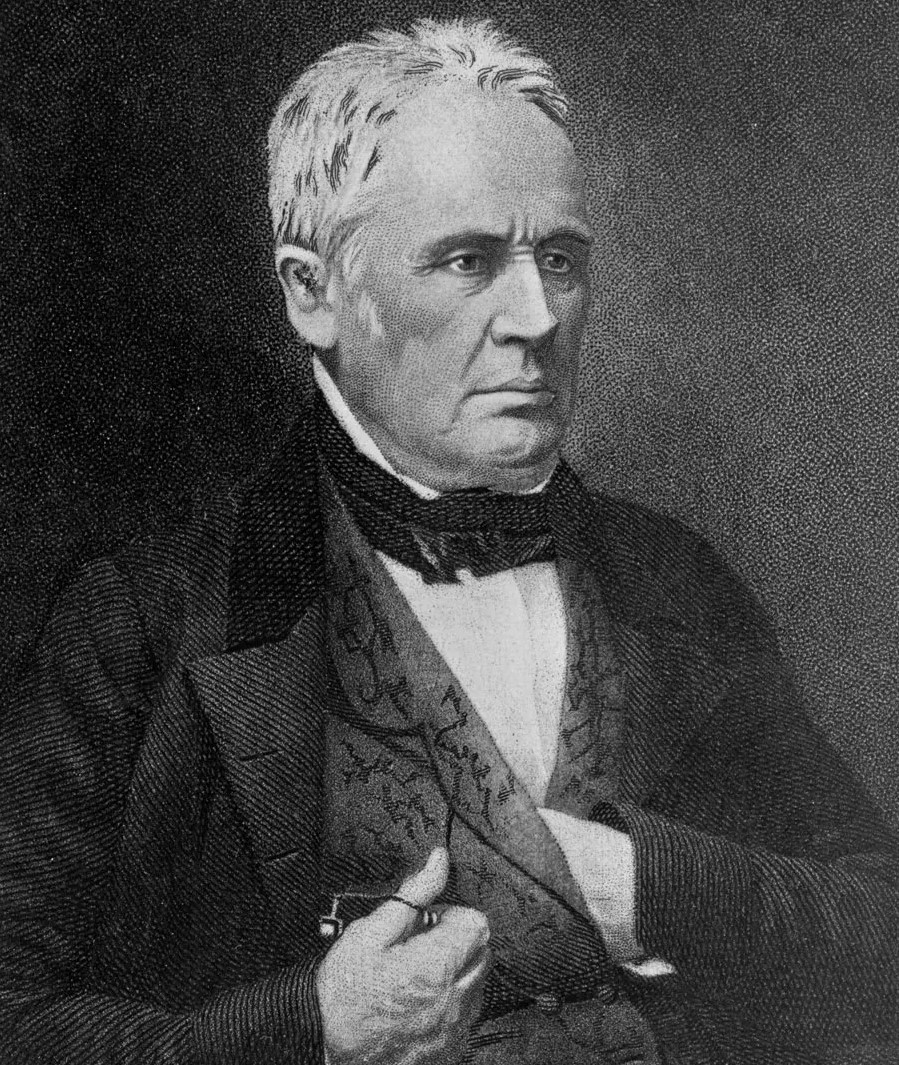
American chemist Benjamin Silliman (Source: Britannica)
There are a few more common minerals apart from the above minerals. Most of us deal with these very common rock-forming primary or secondary minerals. But many of us don’t know the origin of their names-
- Illite: This mineral has been named after its type location Illinois, US, where it was found in the Maquoketa shale in Calhoun County. Avalite is a chromium-bearing variety of illite, which has been described from Mt. Avala,
- Smectite: Due to the lubricating earthy nature this mineral has been named after the ancient Greek word ‘smektos’ meaning ‘lubricated’ or ‘smektris’ indicating ‘rubbing earth’.
- Montmorillonite: A mineral of the smectite group named after the ‘Montmorillon’ city of France from where it was reported. Montmorillon is called “City of Writing” with several dedicated writing-inspired museums and bookshops.
- Kaolinite: Kaolinite was dug up from the Gaoling (‘Gao’ means high, ‘ling’ means ridge), a Chinese village near Jingdezhen in Jiangxi province, China. From the term ‘Gaoling’, this mineral-bearing rock was named Kaolin. Hence the mineral was demonstrated as Kaolinite.
- Vermiculite: From the Latin word ‘vermiculus’ implying ‘wormlet’ this mineral has been named because of its fibrous nature and tendency to expand into worm-like shapes when heated.
- Glaucophane: Greek words ‘Glauk’ means blue and ‘phane’ means appearance. Glaucophane has been named for its blue colour which gives the “blueschist” metamorphic rock type its name.
- Stilpnomelne: The Greek word “stilpnos’ means shining and ‘melanos’ means ‘black’. This is another mineral name which is the indicator of its physical appearance. It was first reported from Moravia in the Czech Republic by Ernst Friedrich Glocke.
- Brucite: American mineralogist Archibald Bruce first reported this mineral, hence Francois Sulpice Beudant named this mineral in honour of Bruce in 1824.
Do you know about the most structurally complex mineral??
It’s Ewingite. In 2017, Olds et. al, reported this most structurally complex mineral on the earth from a uranium mine in the Czech Republic. The mineral was found on a damp wall of the old Plavno mine of the Jáchymov ore district in western Bohemia. Interestingly, the uranium ore in which the polonium and radium were discovered by Marie and Pierre Curie, was mined from this region.
Why the name Ewingite?
The mineral was named in honour of Rodney Charles Ewing, an American mineralogist and materials scientist, who was globally recognized for his innovative piece of research on the metamictization of Nb-Ta-Ti oxides due to radiation damage caused by the presence of radioactive elements. His discovery of radiation-resistant ceramics was a breakthrough and led to the development of techniques to predict the long-term behaviour of materials used in radioactive waste disposal.
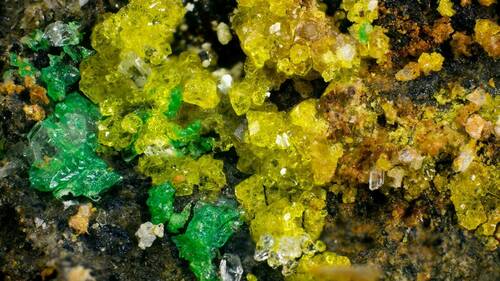 Mineral ewingite (Source: Britannica)
Mineral ewingite (Source: Britannica)
 Rodney C. Ewing, American materials engineer (Source: Wikipedia)
Rodney C. Ewing, American materials engineer (Source: Wikipedia)
Sources of information:
www.britannica.com
www.merriam-webster.com
www.mindat.org
www.etymonline.com
www.encyclopedia.com
www.oxfordreference.com
https://uwaterloo.ca/earth-sciences-museum/resources/detailed-rocks-and-minerals-articles/
Richard V. Gaines, H. Catherine W. Skinner, Eugene E. Foord, Brian Mason, and Abraham Rosenzweig: Dana’s new mineralogy, John Wiley & Sons, 1997

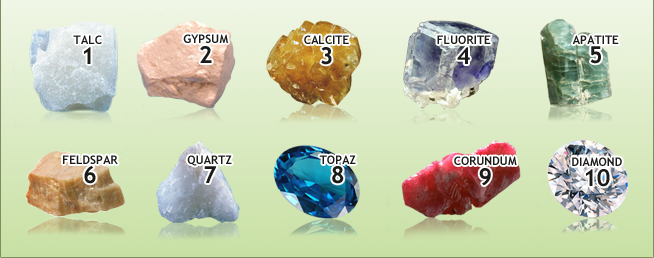
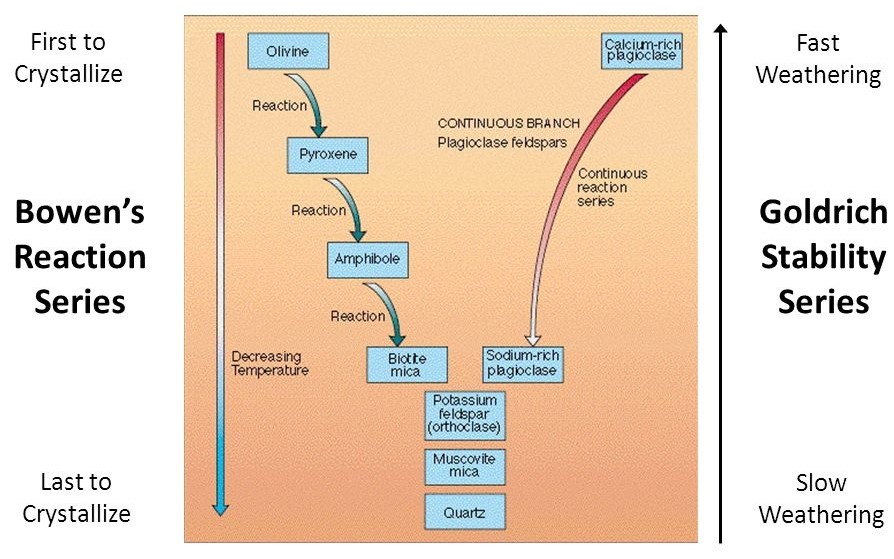
U Soe
This is very attractive to know for me.I would like to read more articles about mineral. So thank you so much.